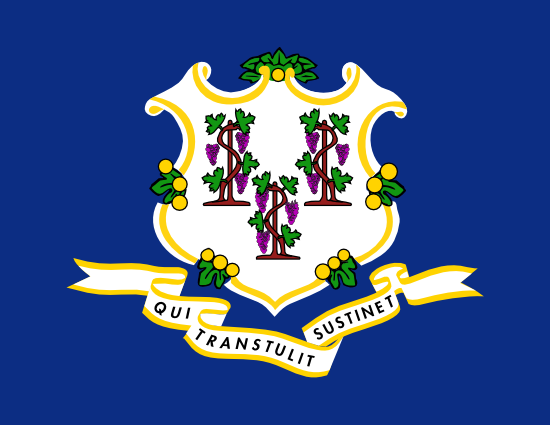
Connecticut
- Statehood Year:
- 1788
- Capital:
- Hartford
- Largest Cities:
- Bridgeport, Stamford, New Haven
- Abbreviation:
- CT
Connecticut is a state in the Northeast region of the United States, known for the Long Island Sound coastline and historic New England towns. It has a population of 3,707,120, making it the 29th most populated state in the country. The capital city is Hartford. Connecticut has a strong insurance, manufacturing, and defense industries.